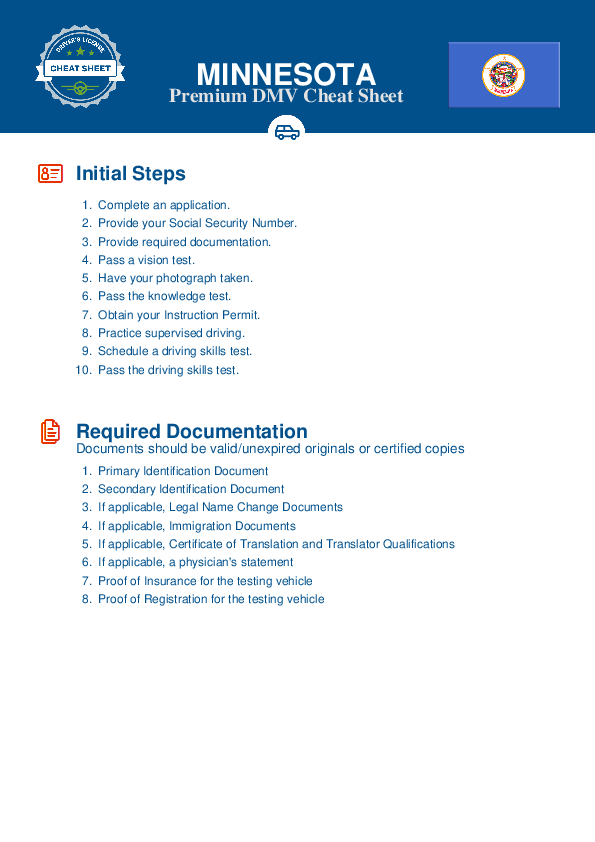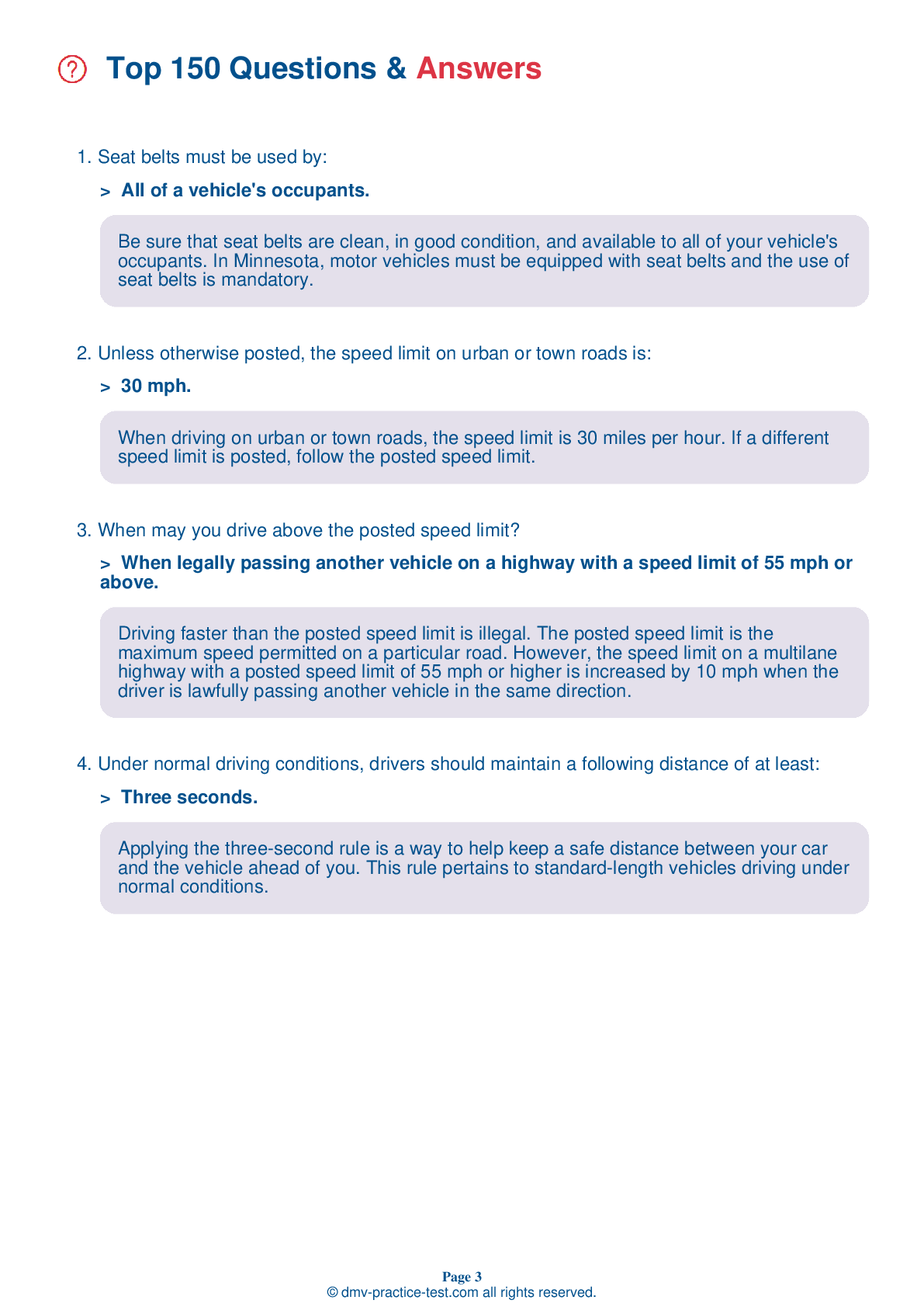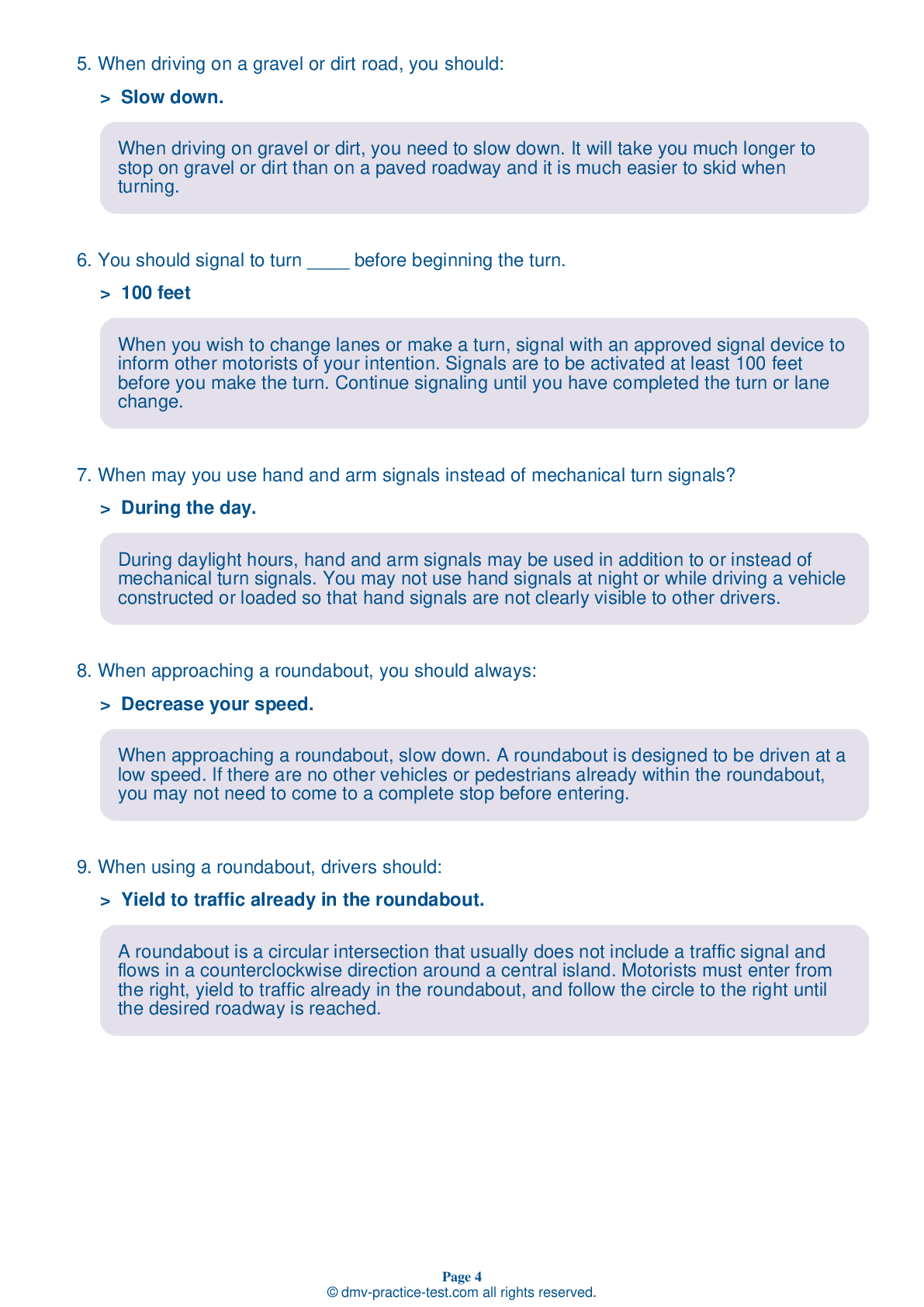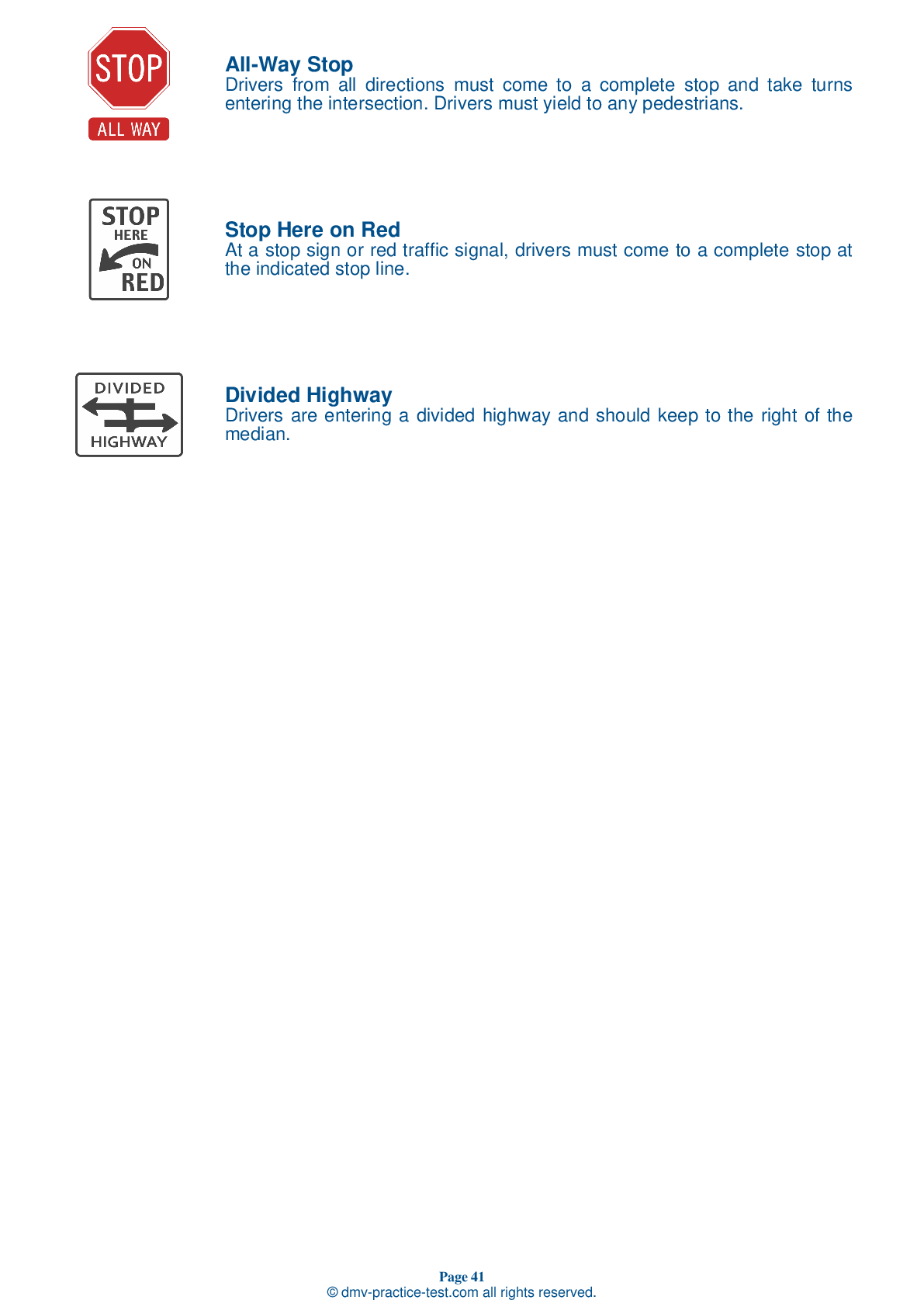FREE Minnesota DMV Practice Test #6
The Minnesota DMV practise examinations have been updated for January 2025. It includes questions based on the Minnesota Driver Handbook's most essential traffic signals and laws for 2025. Use actual questions that are very similar (often identical!) to the DMV driving permit test and driver's licence exam to study for the DMV driving permit test and driver's licence exam.
On the practise exam, each question gets a tip and explanation to help you remember the concepts. The written component of the official Minnesota DMV test will include questions about traffic rules, traffic signs, and driving statutes, as well as knowledge from the Driver Handbook.
To obtain a passing grade, you must correctly answer 32 of the 40 questions. To help you prepare for your instruction permit or driver's licence, take our Minnesota DMV practise test.
The DMV exam is available in several languages.
Using any kind of testing assistance will result in an automatic fail, and the DMV may take additional action against your driver's licence, so stay away from it.
1 . When you want to make a right turn, your car must be:
As you prepare to make a right turn, you should get as far to the right side of the road as possible. Do not cut across lanes of traffic to perform any turn.
2 . A red arrow displayed on a traffic light means that:
Unless a posted sign indicates otherwise, a traffic signal displaying a red arrow means that drivers must come to a full stop and remain stopped until a green light or green arrow appears.
3 . A "Merging lanes" sign means drivers should be prepared to change lanes or allow other traffic to come into their lane.
A "Merging lanes" sign indicates that two lanes of traffic going the same direction will soon merge into one lane. Drivers should be ready to either change lanes or allow other traffic to merge into their lane.
4 . This sign means:
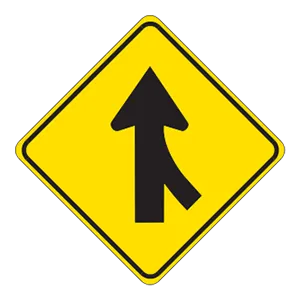
Warning signs prepare drivers for upcoming road conditions and hazards and are usually yellow with black markings. This sign alerts drivers to potential traffic merging from the right. Drivers should prepare to allow the traffic to merge safely.
5 . Pentagonal signs indicate:
Pentagonal signs indicate that you are in a school zone. Be extra alert to children and pedestrians when driving near a school.
6 . If you stop along the road at night:
If you stop along the road at night, turn on your emergency flashers and leave your low beam headlights turned on. Be sure that other road users will be able to clearly see your vehicle.
7 . If you experience a tire blowout:
If you experience a tire blowout, take your foot off the gas pedal and do not immediately apply the brakes. Gradually slow down before gently applying the brakes and pulling off the side of the road.
8 . This sign means:
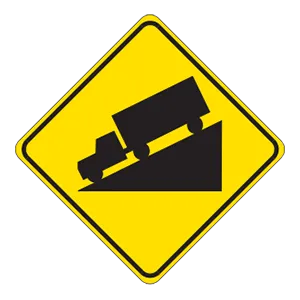
Warning signs prepare drivers for upcoming road conditions and hazards and are usually yellow with black markings. This sign warns drivers about an upcoming steep hill. They should adjust their speed accordingly to avoid brake damage or collision.
Need Car Insurance? No problem!
Compare the best rates in Minnesota and find a personalized policy that meets your needs.
1. Are You Currently insured ?
2. Married ?
3. Do you own your Home?
4. Do you have more than 1 car ?
5. Your Name
6. Age
7. Zip code
IMPORTANT REMINDER:Auto Insurance is Mandatory to drive in Minnesota. Get covered before you hit the road to avoid any fines.
Ranked by best match
